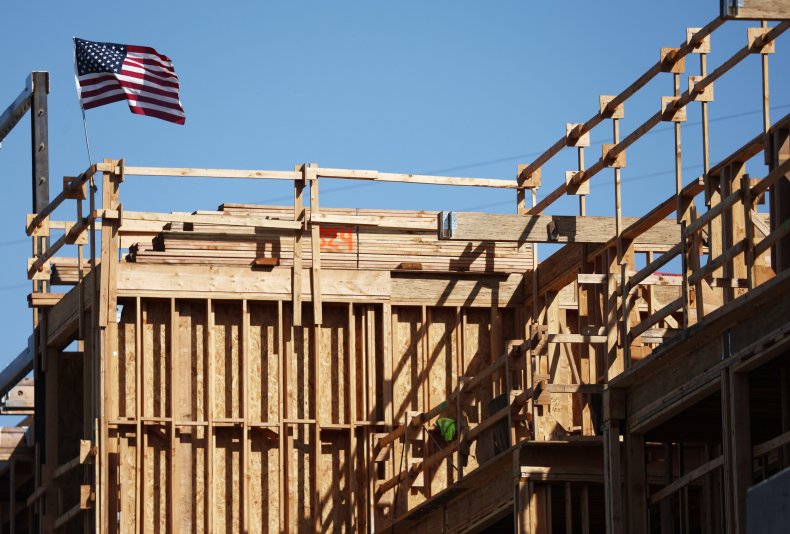California’s Housing Market Gets a Lifeline
BY GIULIA CARBONARO ON 6/20/23 AT 9:17 AM EDT
he Federal Reserve’s recent decision to pause its aggressive rate-hiking program could offer a lifeline to the struggling California housing market, an expert told Newsweek.
After raising interest rates 10 consecutive times since March 2022, the Fed announced last week that it would leave its key rate unchanged, as it waits to assess the full impact of its policies on the U.S. economy.
The move, said Jordan Levine, senior vice president and chief economist for the California Association of Realtors, could help release pressure on the California housing market, which has suffered some of the deepest home price plunges since the start of the housing market correction that began last summer.
Last year, home prices reached skyrocketing heights across the country due to a combination of lack of inventory, bidding wars between homebuyers, and low mortgage rates. But as mortgages became more expensive following the Fed’s interest rate hikes, home buying became unaffordable for many, demand started dropping—and so did home prices.

Across the country, the home price decline was modest. But in big metros where homes were significantly overpriced, many of which are in California, prices dropped by over 5 percent in recent months.
In San Francisco, home prices plunged by 9.92 percent year-on-year in April, according to Zillow. In San Jose during the same period, they dropped by 9.46 percent, and in Sacramento by 6.85 percent.
Average home prices in California peaked at over $900,000 last year, but had dropped by 18 percent from their peak by February of this year. But prices have recently bounced back in the state, reaching above $800,000 “for two months in a row since last year,” Levine said.
What’s driving this comeback? A lack of inventory—which is not great news for aspiring homebuyers hoping for affordable prices.
“When you look at the near-term expectations, prices are expected to continue to rise on a month-to-month basis for the next few months because inventory remains extremely tight in California,” he explained.
“There are currently fewer homes available for sale than there were during the lockdown of April and May 2020.”
That means that even with lower demand, California still has “more homebuyers than homes to put them in,” Levine said, “which is why there is still upward pressure on home prices and why homes have begun to sell quickly again, with roughly half of all transactions closing above list price once again.”
The Fed pausing its tightening cycle is going to be helpful for the state’s aspiring homebuyers, Levine told Newsweek. “Since they began raising rates, longer term Treasury rates, and thus, mortgage rates, have climbed significantly with rates near 7 percent for 30-year mortgages,” he said.
“This has crimped purchasing power and had a negative impact on homebuyer demand in the state. As the Fed nears the end of its tightening cycle, there should be less upward pressure on rates, meaning that the bulk of the adjustment to this new environment is probably behind us.”
While the Fed’s decision is not going to automatically increase homebuyer demand because supply remains low, “a drop in rates would be helpful to alleviate some of the lock-in effect that current homeowners are facing after having secured the lowest interest rates of all time on their existing mortgage,” Levine said.
According to Levine, the vast majority of homeowners have rates that are below 4 percent, so a dip from 7 to 5-6 percent “could help reduce the cost of selling your home and moving to a new mortgage on your next home.”
“This could help to generate some much-needed resale inventory,” he said, “which would have a significant benefit to overall home sales and to homebuyers that are struggling to find available inventory.”
The central bank foresees raising its key rate at least twice more before the end of the year—a move that would harm homebuyers, according to Levine.
This article originally appeared here: https://www.newsweek.com/california-housing-market-lifeline-fed-interest-rate-1807756
